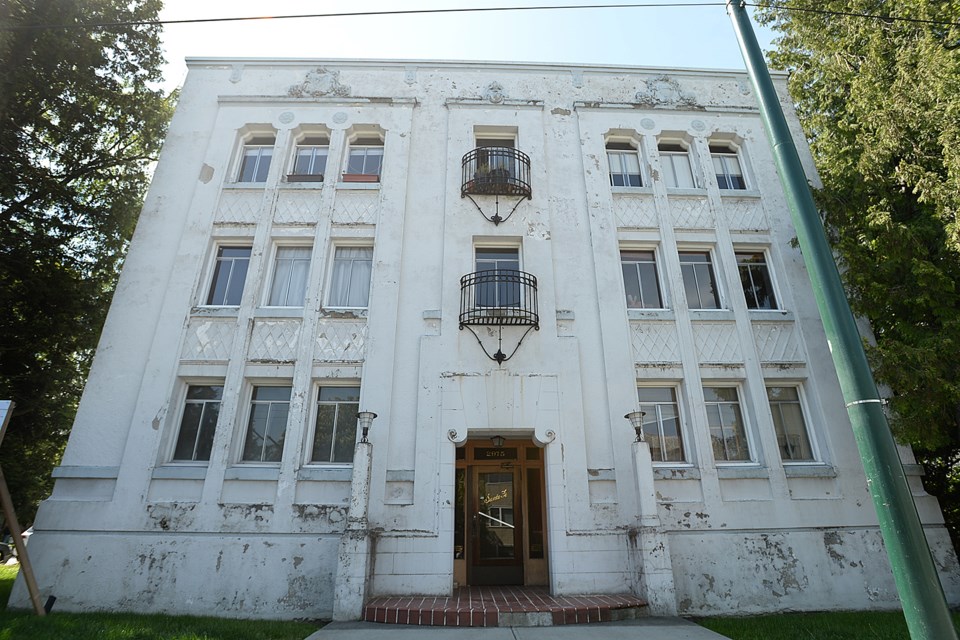The exterior of the Santa Fe low-rise apartment building at 2975 Oak St. at West 14th, originally known as The Van Arsdel, is well worn and in obvious need of restoration.
That may happen through heritage designation and a Heritage Revitalization Agreement, which would see the façade restored and an 11-storey building constructed behind it.
The project, submitted by Aquilini Development and Construction Inc. and CEI Architecture, would produce 50 secured market rental units.
The heritage designation and Heritage Revitalization Agreement goes before public hearing May 20.
City policy requires council approve an HRA if the proposed density exceeds 10 per cent over what is permitted, which is the case in this situation, according the City of Vancouver communications department.
The Vancouver Heritage Commission has endorsed the proposal, while the Urban Design Panel voted 3-2 against it.
City staff considers the UDP’s concerns to be of a detail nature that will be addressed as part of the design development, and it’s not possible to retain the wood interior structure: “The façades being retained are where the primary aesthetic values of the building are located, and the facades’ concrete structure makes retention physically possible in this case.”
Heritage expert Donald Luxton prepared a statement of significance for the Period Revival-style building for the development application.
It was built in 1928 and designed by Townley and Matheson, who also designed the Stock Exchange Building and Vancouver City Hall.
The Van Arsdel was constructed for Empress of Asia Captain Arthur Wellesely Davison. He named it after his wife Eva Van Arsdel Margeson. It was renamed the Santa Fe in 1945.
“Constructed to meet the growing residential demand of the 1920s, The Van Arsdel is valued for its representation of the early densification of Vancouver’s streetcar arterials,” the statement of significance reads.
“… The building, along with many of a similar vintage throughout the neighbourhood and city, stands as a reminder of the austere interwar years, as people settled in smaller spaces, yet still desired a convenient location.”
Luxton calls the building “handsome.”
“I think it is a very sophisticated building and compares favourably with the better Vancouver apartment buildings of the time,” Luxton told the Courier. “The big issue on this project — like many in Vancouver — is where do you put the parking, which requires excavation, so it is proposed that the two main façades will be retained, with the form of the building recreated behind. They are also [dealing with] other technical issues like seismic upgrading that must be accommodated.”
Conservationists are sometimes critical of only saving the façade of a heritage building. Luxton said while such decisions are not preferred, the decision-making process can be complex, especially when existing zoning allows for increased density.
“Often there are conflicting program requirements on the site that make it really difficult to keep the existing configuration, and a building built 100 or 80 or 50 years ago just wasn’t built to accommodate what’s needed to make the site work financially. And often that’s density because of the increased land value. Often it’s parking or often it’s seismic — or a combination of all three usually,” he explained.
“When that kind of decision comes up, clearly it’s not our first choice ever and it’s not the best conservation solution, but we look at it as more important to save something than nothing. So we will go to some lengths to actually preserve the primary façade or facades to recall the building.”
In the case of the Van Arsdel, Luxton said he looked at the interior, but it’s extremely plain and the building has been let go.
The façade, however, is recoverable and he expects it will look “amazing” when it’s restored.
noconnor@vancourier.com
twitter.com/Naoibh



